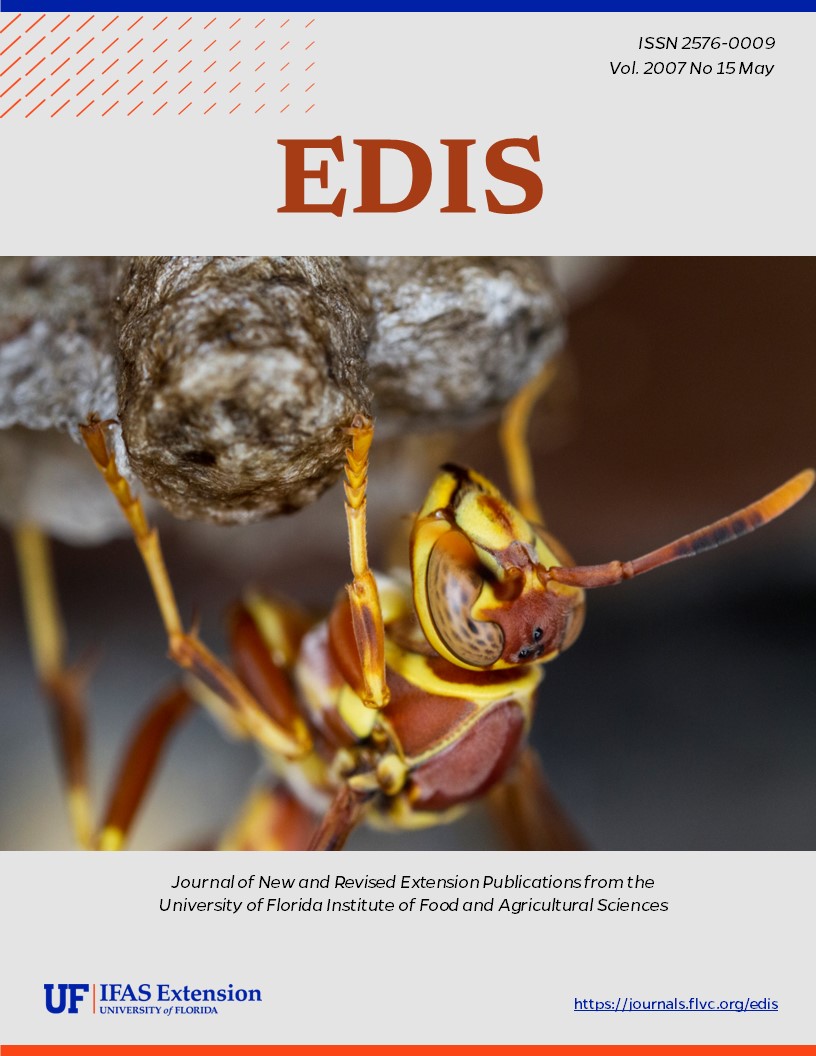Abstract
HS-1101, a 5-page illustrated fact sheet by David Studstill, Eric Simonne, Jeff Brecht, and Phyllis Gilreath, describes this physiological problem affecting the midribs of Napa cabbage, the symptoms, possible internal causes and postharvest handling effects on pepper spot. Includes selected references and a table showing sensitivity by variety. Published by the UF Department of Horticultural Sciences, May 2007.
HS1101/HS352: Pepper Spot ("Gomasho") on Napa Cabbage (ufl.edu)
References
Brecht, J.K., M. Sherman, K. Bergsma, W.M. Stall and K.D. Shuler. 1987. Influence of postharvest conditions on black speck of Chinese cabbage. HortScience 22:1128. (Abstract)
Cantwell M. and T. Suslow. 2006. Cabbages (round and Chinese types) recommendations for maintaining postharvest quality. Department of Plant Sciences - University of California, Davis. Produce/ProduceFacts/Veg/cabbage.shtml.
Daly, P. and B. Tomkins. 1995. Production and Postharvest Handling of Chinese Cabbage (Brassica rapa var. pekinenis). Institute For Horticultural Development, Publication No. 97/1.
Dimsey, R. and B.N. Bairnsdale. 1997. Growing Chinese cabbage. Agriculture Notes. Department of Primary Industries, State of Victoria. AG0614. ISSN 1329-8062.
Hansen, H. and H. Bohling. 1980. Long-term storage of Chinese cabbage. Acta Hort. 116, 31-34. https://doi.org/10.17660/ActaHortic.1981.116.4
Kelley, W.T. 1999. Chinese cabbage and related oriental crops. Georgia Cooperative Extension Circular 809.
Kim, B.S. and A. Klieber. 1997. Quality maintenance of minimally processed Chinese cabbage with low temperature and citric acid dip. J. Sci. Food Agr. 75:31-36. https://doi.org/10.1002/(SICI)1097-0010(199709)75:1<31::AID-JSFA836>3.0.CO;2-X
Klieber A. 2001. Chinese cabbage; pre-harvest and harvest practices. Access to Asian Vegetables. NSW Agriculture. Issue 43:1-2
Mathiassen, H.P. (1986). (abstract). Discoloured vascular bundles in Chinese cabbage after storage. Gartner-Tidende 102: 48, 1614-1615.
Phillips, D. and A. McKay. 1989. Chinese cabbage - a crop at the crossroads. W.A. Grower, 26 (11), 20-21.
Phillips, D.R. and N.B. Gersbach. 1989. Factors influencing petiole spotting (gomasho) in Chinese cabbage. Acta Hort. 247:117-121. https://doi.org/10.17660/ActaHortic.1989.247.19
Rangarajan A. and B. Ingall. 2002. Chinese cabbage cultivar evaluations. Department of Horticulture, Cornell University. http://www.vegetables.cornell.edu/online/2002veg/PDFs/CCabbage%20Final%20table1.pdf.
Tan, S.C., Y.S. Haynes and D.R. Phillips. 2005. Post-harvest handling of Brassica vegetables. Farmnote. Department of Agriculture-Government of Western Australia. No 44/94.
United States Department of Agriculture (USDA). 1945. United States standards for grades of cabbage. http://www.ams.usda.gov/standards/cabbage.pdf
Van den Berg, L. and C.P. Lentz. 1977. Effect of relative humidity of storage life of vegetables. Acta Hort. 62, 197-208. https://doi.org/10.17660/ActaHortic.1977.62.20
Warner, J., R. Cerkauskas, T. Zhang and X. Hao. 2001. Response of Chinese cabbage cultivars to petiole spotting and bacterial rot. J. HortTech. 13(1):190-195. https://doi.org/10.21273/HORTTECH.13.1.0190
Waters, C.T., Morgan, W.C. and D.J. McGeary. 1992. How to identify, grow and use oriental vegetables. Department of Food and Agriculture, 128 pp.

